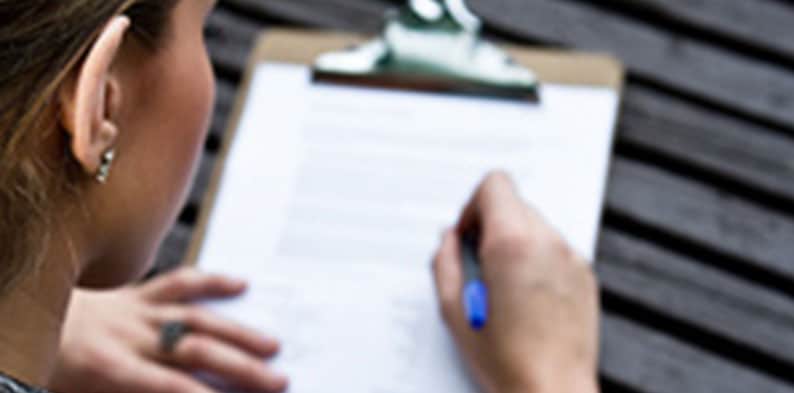Moving to a new house can bring you stress in different ways. However, managing your stress is easier when everything’s organised, and expectations are set. You will be able to manage your stress or may even reduce it.
People who have experienced moving to a new house have learned a lesson or two. They have shared valuable details that are very helpful.These things will most likely be overlooked by someone who is moving for the first time. Check out these tips we have compiled to make your move more bearable, resolve possible mishaps, and to reduce the stress one step at a time.
Before The Move
What could go wrong when you don’t plan accordingly before the move? For instance, if you don’t do enough research to choose a professional moving company, they could show up late or don’t show up at all on moving day. Here are some essential tips you can consider before the move.
1. Start Planning Early
When it comes to moving, there’s no such thing as go with the flow. You have to start the planning process early and break down a more significant task (in this case, moving!) into many smaller ones, so you will know how much time you have until the scheduled date.
Know who will be doing what, and how it’s going to get done. The planning details are just as important, so you won’t find yourself scrambling the last minute.
It is also at this stage where you set your moving budget. From allocating a budget for a professional moving company to how much you will spend on materials, tools, food, and transportation.
2. Set The Moving Date
Schedule the moving date from the beginning. If you have the date set for the moving day, it will be easier to do the next step. Check the availability of the moving company, and the people who you will need help from.
3. Look For A Professional Moving Company
You have the budget set, selected the date; the next step is to look for a professional moving company. Look for movers who will help you simplify the moving process. You can get their services based on your specific needs. If you have a moving company in mind, consider the following.

Check Their Registration
Are they registered with the Australian Furniture Removers Association (AFRA)? If they are listed with AFRA, know that they have complete equipment, vehicles, and necessary permits. Plus their staff are trained, and experts in moving.
Check for Additional Transfers and Fees
Are there extra charges for transfers? Request for a quote based on your moving requirement. This will prevent you from spending more than your budget.
Ask for Their Packing and Storage Services
What other services do they have that you may need? For example, if you don’t have time to pack or if there is a specific item that you need help with packing. You can get their service at a cost. Some moving company offers storage solutions for short or long term. You will need storage when you’re moving to a smaller house, and you got a lot of stuff that you don’t know where to store yet.
Ask For Insurance Details
Are your personal belongings insured in case of damage or loss? Check the details, so you know all the fine print in case something happens to your stuff during the move.
4. Plan Your Meals
You may be thinking about what to do with what’s left of the frozen food in your fridge. If you don’t plan your meals, you may end up wasting them. To avoid unnecessary wastage of refrigerated items, have enough time to use them all and empty the fridge. It will allow you to unplug the refrigerator at least 24 hours before the moving day.
5. Have A Master To-Do List
A master to-do list of everything about the move will keep your mind at peace and not all over the place. Have I taken the measurements of the door at the new house? Check. Have I purchased the supplies such as bubble wrap, tape, and moving boxes? Check. Have I changed my account address? No.
Don’t rely on your memory and start with your to-do list.
6. Prepare Your Moving Supplies
Prepare tools and materials that you will need for packing. Tools like screwdrivers, packing tape, velcros, Ziplocs, cable ties, bubble wraps, and sharpies.
7. Get Moving Boxes
Moving boxes are versatile than ordinary boxes. You can load a moving box with bulky items and carry it with ease. Make sure to keep extra moving boxes as you might need to pack items last minute.
8. Pack By Room And Sort By Category
Create a simplified process in packing by choosing which room to do it first, and what item category you would like to start. For example, pack all the books in every room, next item would be the out of season clothes, then artworks, wall hangings, and picture frames.
9. Get Rid Of Clutter
While you’re in the process of packing, might as well get rid of clutter too. For example, when you’re packing books, remove and recycle the books that you know you won’t read anymore. Use the four pile method to quickly sort things – keep, sell, throw, and donate.
10. Have A Donate Pile
You can donate all the clutter you have sorted out that may still be useful for others in need. Inspect each item and make sure that they are damaged or the charity you will be giving it to will put them in the trash.
11. Use Small Moving Boxes For Heavy Items
Using a large box for heavy and bulky items will require two people to move it. It is much easier and faster to move heavy things with a small box.
12. Label Every Box

Do not forget to label every box. Remember the three simple process – pack, seal, and label. Use a colour code or numbering system for your boxes. Marking the boxes using a numbering system will allow you to check whether a box is missing easily.
13. Plan A Garage Sale
Sell those that you don’t need but too valuable to give away. You can earn a few extra from selling some stuff to cover your moving expenses.
14. Use Calendar To Schedule Your Packing (and Decluttering)
Schedule packing and allow one day for each category like books, artworks, DVDs and CDs, clothing, decorative items, and more. So you wouldn’t feel overwhelmed when it’s getting closer and closer to your moving date. Using a calendar ensures that you will stick to your schedule and will not be slacking.
15. Call A Family Or Friend

Ask for favours from a family or a friend. Delegate simple tasks like helping you pack, clean, or do some serious heavy lifting. Acknowledge that these are big favour and you must not take it personally if they say they won’t be able to help.
16. Hire A Babysitter
Hire a babysitter on moving day so you can have someone help you take care of your child/children while you supervise and manage the move. If you don’t have a child, how about a pet sitter? Having a babysitter will be one less thing to worry.
17. Gather All Your Important Documents
All relevant documents should be packed together and transported personally. These documents include passport, IDs, birth certificates, personal records, and legal papers.
Any paperwork that is pertinent to the movers, new home lease and moving permits should be easily accessible with you.
18. Change Your Address
Update your address with your bank and loan providers so that the following billing statements will be sent to your new address.
19. Transfer Your Membership
If you have an active membership, transfer your gym membership to the nearest branch in your new neighbourhood.
20. Take Pictures Of Electronic Connection Plugs
So even if you remove the connection plugs at the back of the TV and the DVD or DVR player, it would be easy for you to reconnect them in the new house.
21. Call Utilities
Call and schedule for utility disconnection in your old home and installation or reconnection of services in your new home.
22. Be Prepared For “What Ifs” Scenarios
There are a lot of what-ifs scenarios that can happen at any time. Identify them and come up with a plan to resolve it. It would be nice if you write them down so you won’t forget.
For example, what if the babysitter don’t show up, what if the truck is too small for your stuff, or what if the parking spot you reserved was taken by someone else.
23. Find Out The Best Route To Your New House
 Learn the best and alternative route to your new house. You will be able to get around if the direction you planned to take is congested. In case there’s heavy traffic, or if there is an emergency. Having an alternative route will enable you to proceed without delay.
Learn the best and alternative route to your new house. You will be able to get around if the direction you planned to take is congested. In case there’s heavy traffic, or if there is an emergency. Having an alternative route will enable you to proceed without delay.
24. Book A Hotel
If you’re moving long-distance, it best to book a hotel. You can have a place to rest at the end of the day and re-energize for unpacking boxes and organizing the next day.
25. Secure Moving Permits
Acquire legal authorizations and permits to avoid unnecessary delays. Get a parking permit that will allow you to park on the street for a certain number of hours – unless you want to pay for parking fines.
26. Inspect Your New Home
Check for leaks, change the locks, check the smoke alarms, and resolve all other maintenance tasks first before moving to your new home.
27. Clean The New Kitchen and Bathroom
Cleaning the kitchen and bathroom is ideal while space is bare. There will be no difficulty going around.
28. Measure The Doorway Or Entryway
To ensure that your old or new furniture or appliance will fit the new house, anticipate the measurement of the doorway or your entryway. Movers will be able to plan how they will be able to adjust and figure out what position to carry or transport the furniture or an appliance.
29. Create A Floorplan
Mark the floor plan with where you want to put the appliance and furniture in your new house. By having a floor plan, it will make it faster for movers to put everything in the new home without having to ask you where should we put this and that.
One Day Before The Move
Keep in mind the things to do one (or two days) before the move.
30. Get Enough Sleep
Getting well-rested before the moving day will make you more productive and invigorated.
31. Get In Touch With The Moving Company
 Call the moving company to confirm that everything is ready and set for tomorrow. So you can make arrangements or plan B just in case.
Call the moving company to confirm that everything is ready and set for tomorrow. So you can make arrangements or plan B just in case.
32. Pack An Overnight Bag
An overnight bag should comprise essential things that you will need on your first night. Prepare items such as medications, vitamins, toiletries, and overnight clothes. Have the overnight bag with you so you can access it anytime.
33. Defrost The Fridge
Some refrigerator takes less than 10 hours to defrost, but allow at least 24 hours to make sure all the water will melt and leak out. If it leaks out in the moving truck, it may potentially damage the fridge.
34. Mark The Fragile Items
Label the fragile items so you can spot out easily those that need extra care.
35. Pack A “1st Day Box” In A Clear Storage Container
Prepare and pack some kitchen stuff, bedsheet, items that you will need on the first day in your new home.
36. Reserve A Parking Spot For The Truck
Apart from the parking permit for your vehicle, reserve a parking spot as well for the moving truck.
On Moving Day
Finally, the moving day has arrived. Get organized and follow these tips to be successful on the day.
37. Prepare A Simple Breakfast
Have a quick, easy to prepare but nutritious breakfast to keep you energized all morning. Moving will keep burning your calories all day, so fuel your body with enough food.
38. Keep A Grab-and-Go Snack Stash
One way to keep your children fed during the day is to have a grab-and-go snack stash. It could be a mix of healthy, packaged snacks in a basket or a snack bin.
39. Take Pictures Of Your Old Home
It is vital to take and keep photos of your every area in your previous home after you’ve packed up your things. Photos will help you refund the security deposit. It will serve as a back up when your landlord blames you for damage that you know you didn’t cause.
40. Gather the Clean-Up Kit
Pack the clean-up kit so it will be ready and handy once you arrive at the new house.
41. Keep Ziploc Bags Handy
Use a Ziplock bag if there are last-minute things you need to pack. Think of tiny screws, brackets, cables, and other small items that you may have almost forgotten to pack at the last minute.
42. Load Heavy Appliance and Furniture Into The Truck First
 The largest and heaviest items should be loaded in the truck first so they can be kept against the wall of the truck. These items include a washing machine, stove, refrigerator, and furniture. These are things that require more than two people to move.
The largest and heaviest items should be loaded in the truck first so they can be kept against the wall of the truck. These items include a washing machine, stove, refrigerator, and furniture. These are things that require more than two people to move.
43. Protect Your Floors And Carpets
Floors and carpets are one of the things that are easily forgotten during a move. Protect your flooring and carpets by using floor runners, carpet masking, and shoe booties. You may use furniture sliders for easy transport and gliding.
After The Move
Once you have unloaded the truck with all your stuff and have reached your new house, there are still tasks you can do.
44. Offer Everyone Food
They may not tell you, but everyone’s starving. Call for pizza and feed everyone who helped with the move. There are other plenty of delivery options you can find.
45. Turn On The Utilities
Do a thorough check of the utilities once you have turned them on.
46. Make The Bed First
Apart from unpacking the first-night essentials box, make your bed first so you can recuperate and have a good night sleep after a very long day. Although it may be impossible to sleep on the first night.
47. Unpack The Toiletries
Save your sanity by unpacking the toiletries as soon as you can. You wouldn’t want to go through the whole boxes trying to find where you kept the toilet paper.
48. Cover Your Windows With Sheets
Curtain installation would be the last thing on your mind when you’ve got several boxes to unload and unpack over the few weeks. Cover your windows with sheets temporarily to protect your privacy from your curious neighbours.
49. Install A New Home Security System
Better to be safe and secure. Install a new home security system. A system that you’re familiar and comfortable with.
50. Unpack Your Boxes
 Start unpacking your boxes one by one. You don’t need to do it all in one day. Spread out the boxes in days so you won’t feel engulfed with this daunting task.
Start unpacking your boxes one by one. You don’t need to do it all in one day. Spread out the boxes in days so you won’t feel engulfed with this daunting task.
Set A Time For Yourself
Moving to a new house is a detailed process and takes too much time and effort from planning up to the actual day. That’s why some tasks are better-taken care of by professionals while you take care of the small details. It’s essential to relax and take time for yourself. Read a book, drink a coffee, or watch a movie.






0 comment